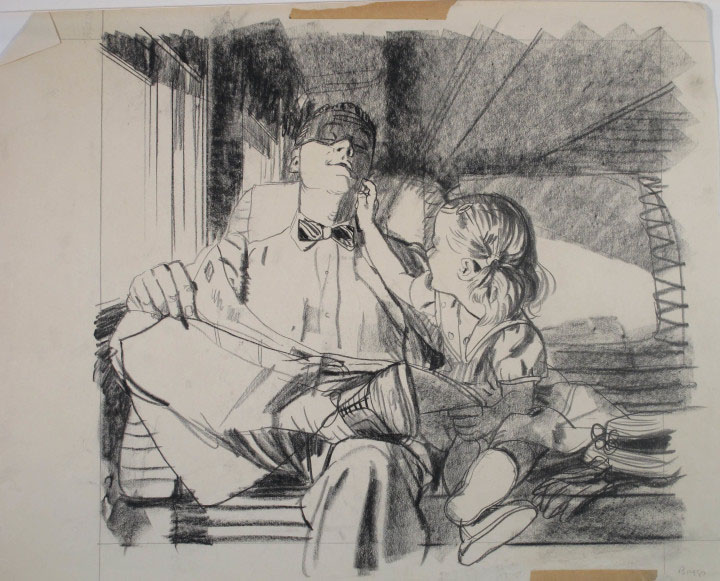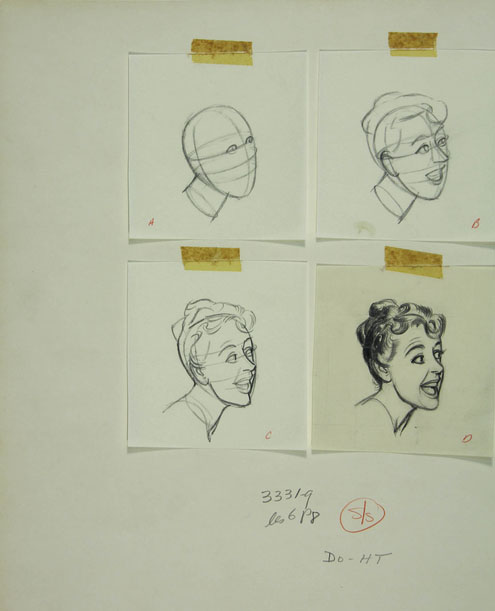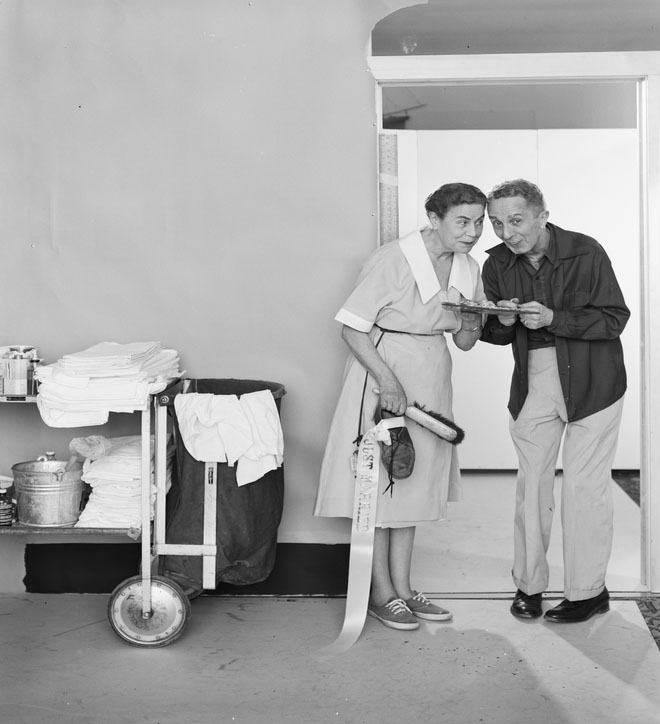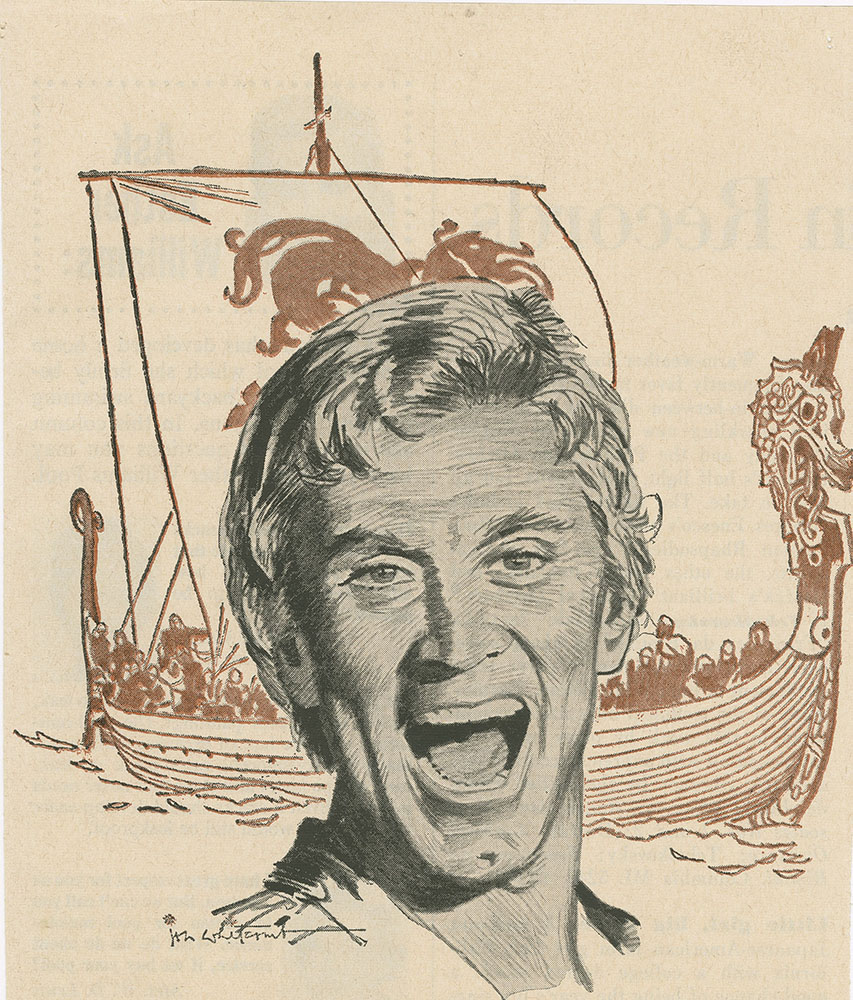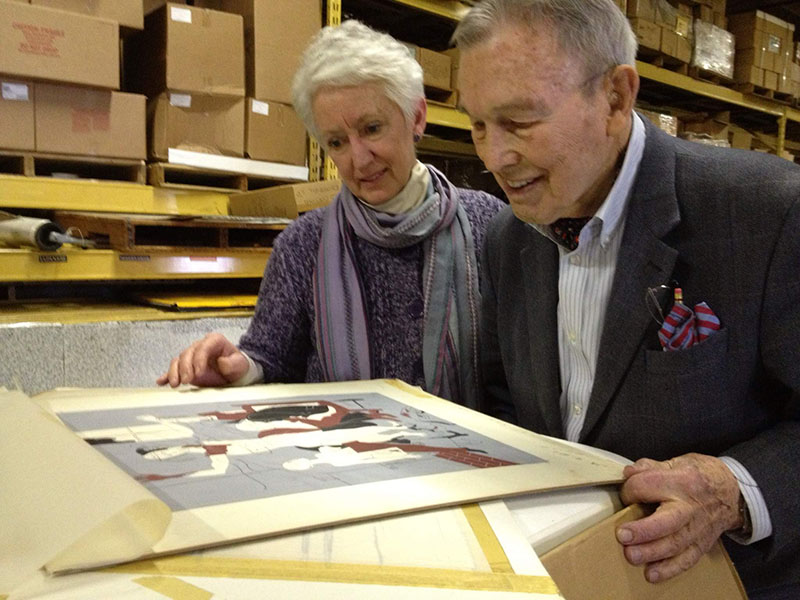Collections Hunters:
Uncovering the Museum’s Art and Archival Collections
The Expressive Face
August 18, 2020 – Written By: Magdalen Livesey
How did artists like Norman Rockwell, Austin Briggs, Jon Whitcomb, and others create the believable unique faces that can tell a whole story by themselves? In a magazine cover, like those by Rockwell and Stevan Dohanos, the image, with its setting and, most of all, its characters, must convey an anecdote without any help from words. So each face must be carefully crafted to do its part in creating the drama⸺or comedy.
Illustrations that accompany stories or that pitch a product in an ad don’t have to do quite as much independent work⸺their role is more supportive. But here, too, expressive faces, along with appropriate body language, are an important factor in the success of the illustration.
When looking at a picture, our eyes naturally go first to the face⸺unless the artist has composed the picture so that the center of interest is elsewhere, for dramatic effect. Our emotions are immediately engaged.
In these drawings, Al Dorne explores a variety of animated facial expressions, from surprised to seductive to attentive. The basic construction of the face is a solid form in the shape of an egg that is intercepted by four convex horizontal lines – for the eyebrows, eyes, nose, and mouth. In each vignette, Dorne has added details that convey emotion and authenticity.
The artist Jon Whitcomb was known for his paintings of beautiful women. He was a master at creating faces that could express a range of emotions and engage the viewer’s empathy. In studying how to create these expressions, he noted that “There are thousands of ways of showing laughing, crying, flirting, screaming, and pouting, but the same sets of muscles work in various combinations to register them all.”
Norman Rockwell photographed his models in preparation for his paintings, coaching them and even demonstrating the body position and facial expressions he was looking for. As his photographer snapped a series of shots, Rockwell would work with his model like a movie director, and the result was a range of emotions that would get to the heart of the story the artist wanted to tell.
To find out more about Austin Briggs, Al Dorne, Jon Whitcomb, and Norman Rockwell, visit their profiles on the Museum’s IllustrationHistory website (IllustrationHistory.org).


